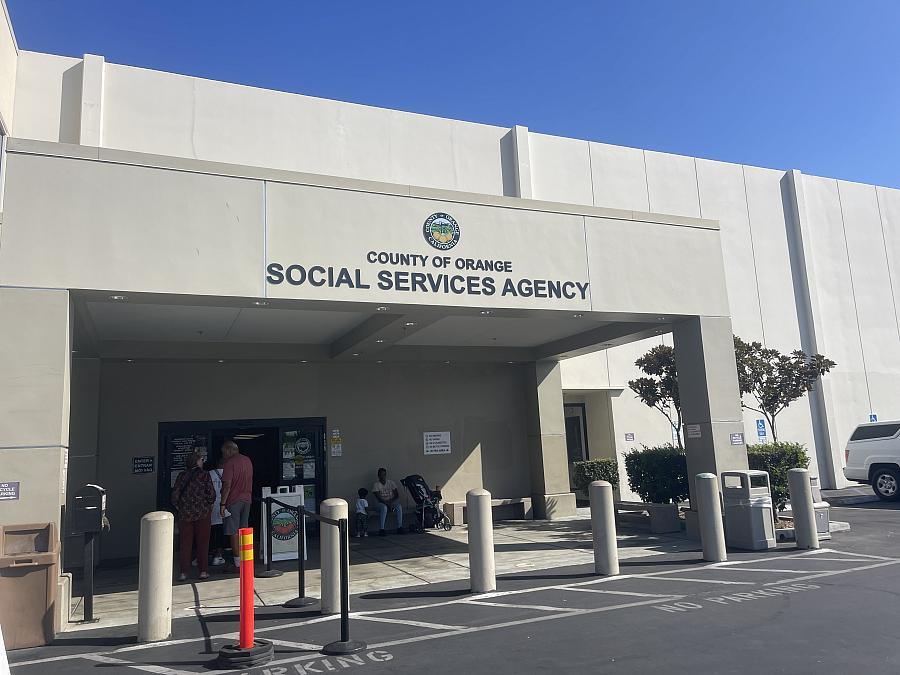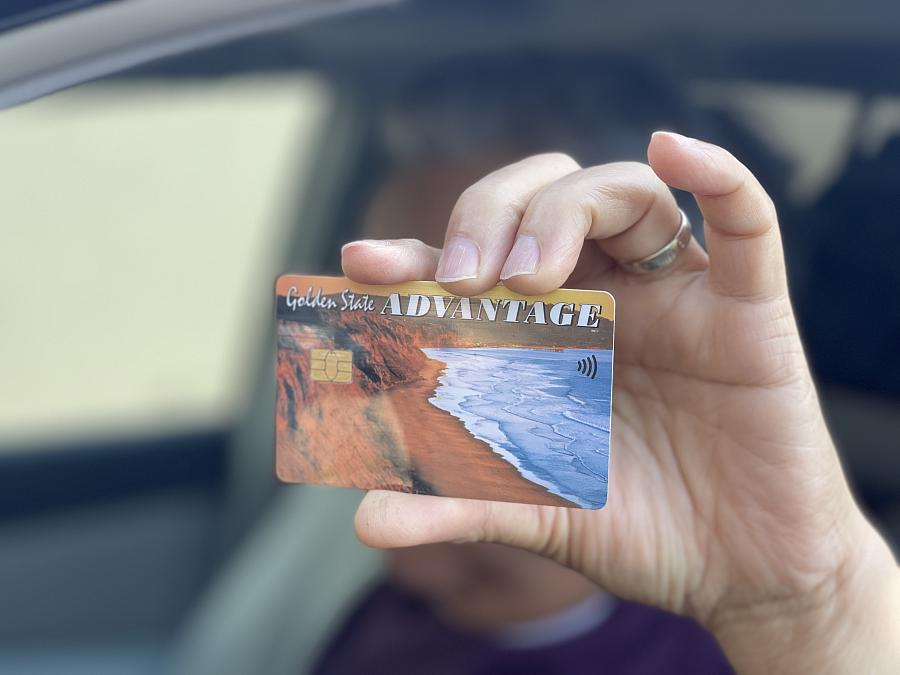What the SNAP shutdown revealed about hunger and health among Vietnamese Americans in California
The story was co-published with Nguoi Viet Daily News as part of the 2025 Ethnic Media Collaborative, Healing California.

Residents waiting at VACF’s food bank event. (Photo: Nguoi Viet Daily News)
Even after the 43-day government shutdown ended late on the night of November 12th, thousands of low-income families still reel from the weeks-long disruption to their most basic lifeline: Food.
In November, Supplemental Nutrition Assistance Program or SNAP benefits were delayed or inaccessible for many families due to frozen federal systems.
In California, 5.5 million people receive SNAP benefits–including low-income families, seniors, and people with disabilities.
As the largest anti-hunger program in the U.S., SNAP helps about 1 in 8 residents who struggle to make ends meet. For over 60 years, it has served as a cornerstone of America’s safety-net system.
CalFresh, known federally as SNAP, helps low-income residents buy healthy food. More than 310,000 Orange County residents — mostly older adults and children — participate in the CalFresh program.
For many CalFresh recipients across Orange County with large concentrations in immigrant neighborhoods like Santa Ana, Garden Grove, and Westminster, November arrived with empty EBT balances, stalled benefits, and no clear answers.
“CalFresh is the only reason I can afford real groceries,” said Van Nguyen, 64, who delivers for Uber Eats. “Without it, I end up eating cheap food that spikes my blood pressure. At my age, that’s dangerous. I rely on those benefits to stay healthy, not just to stay fed.”
“I deliver food to other people all day,” Van said, “but I can’t buy my own meals without CalFresh. The shutdown reminded me how fragile everything is for seniors like me. One missed deposit, and my whole health is at risk.”
Even with the shutdown now lifted, the ripple effects remain, exposing just how vulnerable millions of Americans are when political gridlock interrupts the safety net program they depend on to eat.
Public health experts say the shutdown’s disruption underscores a deeper issue as food insecurity is not just an economic challenge but a health emergency.
For many immigrant, senior, disabled, and low-income families, the disruption wasn’t just an inconvenience, it was a direct threat to health, nutrition, and stability.
Lack of access to affordable, nutritious food is associated with cardiovascular disease, diabetes, and certain types of cancer. In particular, one virtual workshop, convened by the National Institutes of Health, in collaboration with the Centers for Disease Control (CDC) and Prevention and the United States Department of Agriculture (USDA), found that “those of lower socioeconomic status and racial and ethnic minority groups experience higher rates of food insecurity, are more likely to live in under-resourced food environments, and continue to bear the greatest burden of diet-related chronic diseases in the United States.
Anxiety and uncertainty
The suspension of CalFresh benefits because of the federal shutdown created tremendous anxiety for families, said Than Nguyen, community engagement supervisor at the Orange County Social Services Agency.
Nguyen said that their organization worked to put out press releases, updated their website, translated resource guides, and used social media channels to make sure residents knew where to turn for help.
“This disruption has forced people into impossible choices,” he said. “Some families have had to take out loans. Others are cutting back on essential expenses just to buy food. The long-term impact can be severe–especially when people later have to pay interest on those loans.”
“CalFresh isn’t just a food program, it’s an economic engine,” Than Nguyen explained. “Orange County typically issues about $62 million in CalFresh benefits each month. Losing that would be a major blow–not just to families, but to local businesses.”
Vital Access Care Foundation (VACF)–formerly the Vietnamese American Cancer Foundation–has long provided culturally tailored cancer education, screenings, and support services to Vietnamese residents across Orange County.
But as CalFresh benefits stalled during the 43-day federal shutdown, the nonprofit found itself stepping into the role of a hunger-relief provider for the Vietnamese community.

A food distribution event at VACF. (Photo: VACF)
In addition to its weekly food pantry for clients undergoing treatment, the organization also runs a monthly community-wide food distribution that has become a lifeline for many.
“I empathize with the families, especially when their benefits for food are disrupted–that causes anxiety and uncertainty—so we try to help as much as we can,” said Dung Hua, VACF’s director of programs and operations.
Hua said the organization saw a 50% jump in registrations for its November food bank event as soon as news broke that CalFresh benefits might not arrive.
“I noticed many new families on November’s registration list,” she said. “We received so many phone calls asking about our food distribution because people were panicking after seeing the news.”
How SNAP works

The Social Services Agency building in Orange county where applications for CalFresh are processed. Photo credit: Nhien Nguyen
SNAP is funded by the federal government and administered by the states. Eligibility is determined by income, assets, household size, immigration status, and proof of employment. Immigrants on a student, work, or tourist visa are not eligible, nor are DACA (Deferred Action for Childhood Arrivals), TPS holders or undocumented immigrants.
CalFresh money can be spent on food and beverages and on plants and seeds that produce food to be eaten. The money cannot be spent on tobacco, alcohol, pet food, soap, household supplies, vitamins, or nonfood items, among others.
In California, to qualify for CalFresh benefits, the household’s gross income must generally be less than 130% of the Federal Poverty Level (FPL). However, under California’s Modified Categorical Eligibility standard — a policy to expand access to CalFresh —, it can be up to 200% of FPL with the specific amount depending on household size. For example, a three-person household in California in the 2025 fiscal year had a gross monthly income limit of $4,442.
Once approved for CalFresh, recipients receive an Electronic Benefit Transfer (EBT) card, which works like a debit card and monthly benefits get loaded onto the card.

Once approved for CalFresh, recipients receive an Electronic Benefit Transfer (EBT) card, which works like a debit card and monthly benefits get loaded onto the card. Photo credit Nhien Nguyen
“I have to choose between gas, medicine, or food”
Congressman Derek Tran, who represents California’s 45th District, said he worked with federal leaders to prevent incalculable harm to communities in need of food support during the federal gridlock.
The Vietnamese congressman said he urged the Trump Administration and the Department of Agriculture to release “contingency funds necessary to ensure families across the country get their November SNAP payments.”
In late October, the USDA announced it would not pay the full $8 billion needed for November benefits. USDA initially only accessed $4.5 billion in contingency funds, covering roughly half the need.
“My team and I are monitoring updates on the efforts by the California state government to fast-track additional funding to food banks and aid with food distribution,” Congressman Tran said. “However, community-based and private organizations alone don’t have the resources to fill the gap left by federal funding interruptions.”
Van Nguyen said he checked his EBT card every morning like it was a lottery ticket. “Nothing. Day after day. You can’t imagine the stress unless you’ve been there.”
“People think seniors like me can just ‘make it work,’” he said. “But when CalFresh is late, I have to choose between gas, medicine, or food. No one should face choices like that.”
“One shutdown in Washington, and suddenly I can’t eat properly,” Van added. “Our health depends on decisions we have no control over. That’s the part that scares me.”
